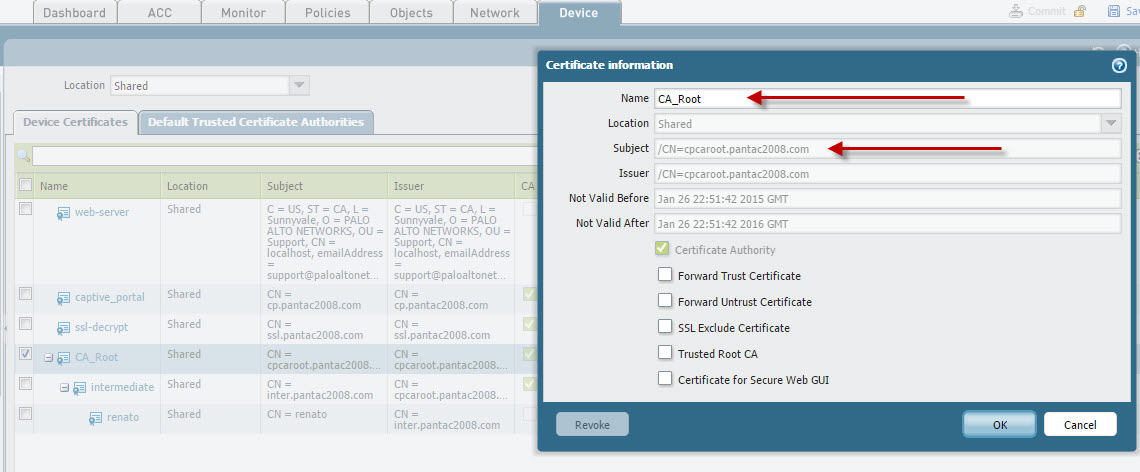Palo Alto Installation Steps For Virtual Wire Mode Evaluation
Did you try this: Unplug everything for 30 seconds, to give time for circuits to fall to zero? Masterguard corporation. Then hook it all back up.Just to make sure: Did you plug the load into UPS, and plug UPS into mains?
A virtual wire deployment simplifies firewall installation and configuration because you can insert the firewall into an existing topology without assigning MAC or IP addresses to the interfaces, redesigning the network, or reconfiguring surrounding network devices. The virtual wire supports blocking or allowing traffic based on virtual LAN (VLAN) tags, in addition to supporting security policy rules, App-ID, Content-ID, User-ID, decryption, LLDP, active/passive and active/active HA, QoS, zone protection (with some exceptions), DoS protection, and NAT. Different firewall models provide various numbers of copper and fiber optic ports, which operate at different speeds. A virtual wire can bind two Ethernet ports of the same type (both copper or both fiber optic), or bind a copper port with a fiber optic port. By default, theLink Speedof copper ports on the firewall is set toauto, which means the firewall automatically negotiates their speed and transmission mode (Link Duplex). When you, you can also select a specificLink SpeedandLink Duplexbut the values for these settings must be the same for both ports in any single virtual wire.

Palo Alto Installation Steps For Virtual Wire Mode Evaluation

Virtual wire interfaces can use to discover neighboring devices and their capabilities, and LLDP allows neighboring devices to detect the presence of the firewall in the network. LLDP makes troubleshooting easier especially on a virtual wire, where the firewall would typically go undetected by a ping or traceroute passing through the virtual wire. LLDP provides a way for other devices to detect the firewall in the network. Without LLDP, the presence of a firewall through the virtual wire link is practically undetectable to all network management systems. VLAN tags—The example inshows an ISP using virtual wire subinterfaces with VLAN tags to separate traffic for two different customers.VLAN tags in conjunction with IP classifiers (address, range, or subnet)— The following example shows an ISP with two separate virtual systems on a firewall that manages traffic from two different customers.
On each virtual system, the example illustrates how virtual wire subinterfaces with VLAN tags and IP classifiers are used to classify traffic into separate zones and apply relevant policy for customers from each network. Virtual Wire Subinterface WorkflowConfigure two Ethernet interfaces as type virtual wire, and assign these interfaces to a virtual wire.Create subinterfaces on the parent Virtual Wire to separate CustomerA and CustomerB traffic. Make sure that the VLAN tags defined on each pair of subinterfaces that are configured as virtual wire(s) are identical. This is essential because a virtual wire does not switch VLAN tags.Create new subinterfaces and define IP classifiers. This task is optional and only required if you wish to add additional subinterfaces with IP classifiers for further managing traffic from a customer based on the combination of VLAN tags and a specific source IP address, range or subnet.You can also use IP classifiers for managing untagged traffic. To do so, you must create a subinterface with the vlan tag “0”, and define sub-interface(s) with IP classifiers for managing untagged traffic using IP classifiers.
When traffic enters the firewall from CustomerA or CustomerB, the VLAN tag on the incoming packet is first matched against the VLAN tag defined on the ingress subinterfaces. In this case, for CustomerA, there are multiple subinterfaces that use the same VLAN tag. Hence, the firewall first narrows the classification to a subinterface based on the source IP address in the packet. The policies defined for the zone are evaluated and applied before the packet exits from the corresponding subinterface. Configure a Virtual WireConfigure the first virtual wire interface.SelectNetwork Interfaces Ethernetand selectan interface you have cabled (ethernet1/3in this example).Set theInterface TypetoVirtual Wireand clickOK.Attach the interface to a virtual wire object.While still on the same Ethernet interface, on theConfigtab, selectVirtual Wireand clickNew Virtual Wire.Enter aNamefor the virtual wire object.ForInterface1,select the interface you just configured (ethernet1/3). (Only interfaces configured as virtual wire interfaces appear in the drop-down.)ForTag Allowed, enter0to indicate untagged traffic (such as BPDUs and other Layer 2 control traffic) is allowed. The absence of a tag implies tag 0.
Enter additional allowed tag integers or ranges of tags, separated by commas (default is 0; range is 0 to 4,094).SelectMulticast Firewallingif you want to be able to apply security policy rules to multicast traffic going across the virtual wire. Otherwise, multicast traffic is transparently forwarded across the virtual wire.SelectLink State Pass Throughso the firewall can function transparently. When the firewall detects a link down state for a link of the virtual wire, it brings down the other interface in the virtual wire pair.
Thus, devices on both sides of the firewall see a consistent link state, as if there were no firewall between them. If you don’t select this option, link status is not propagated across the virtual wire.ClickOKto save the virtual wire object.Determine the link speed of the virtual wire interface.While still on the same Ethernet interface, selectAdvancedand note or change theLink Speed.The port type determines the speed settings available in the drop down. By default, copper ports are set toautonegotiate link speed.